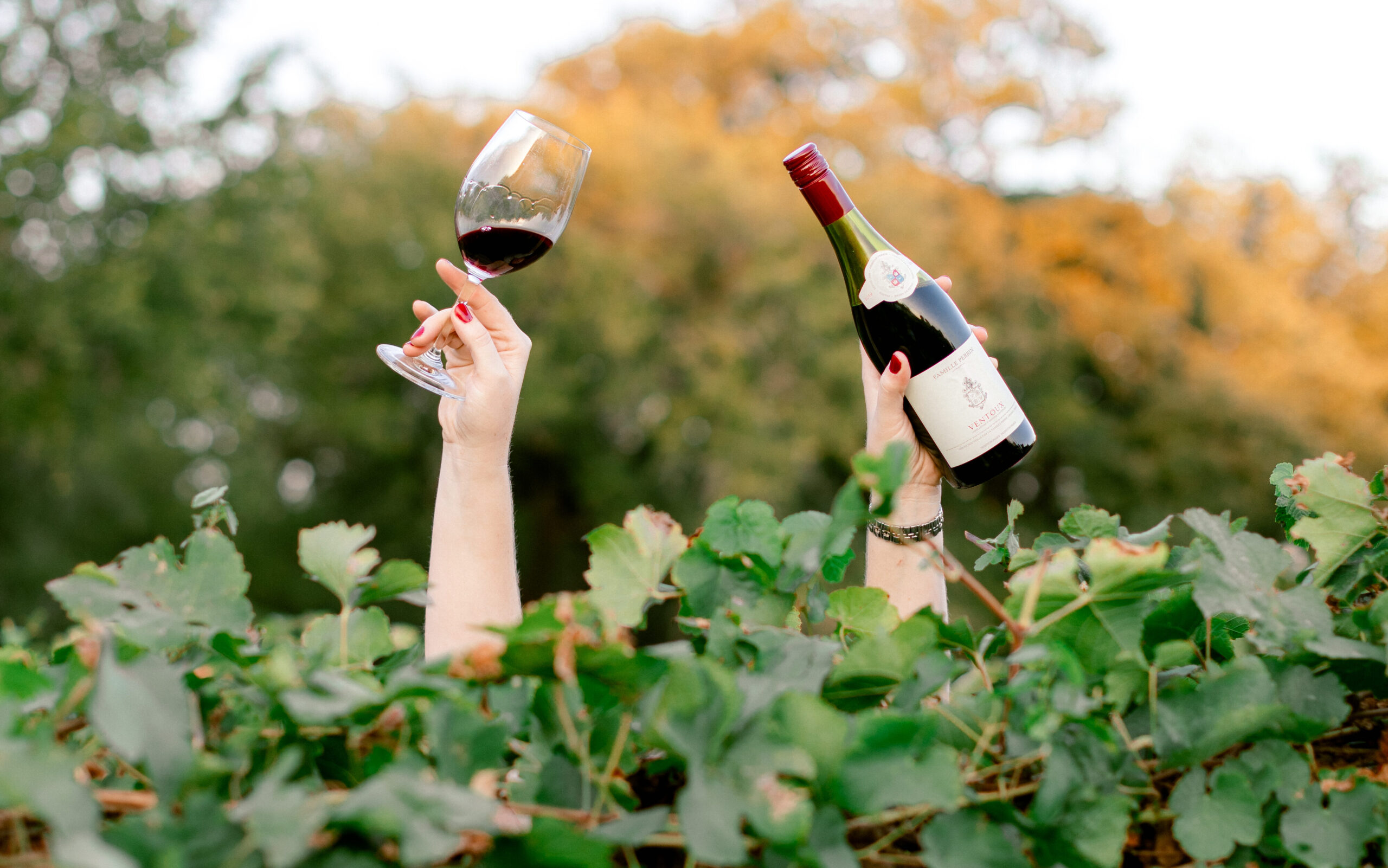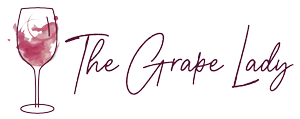Grape Escape: Bordeaux Basics

Bordeaux, a name synonymous with lavish indulgence in a glass, often proves intimidating to wine enthusiasts. Given its vast complexity, it’s completely understandable. With 53 appellations and 65 different wine styles, understanding Bordeaux depends greatly on knowledge of its’ sub-regions and chateaus. But I’m here to help.
The Region
Situated 350 miles southwest of Paris along the Atlantic coastline in France. Bordeaux has been home to a thriving wine industry for hundreds of years with the port and easy access to rivers. These river divide the region neatly in two pieces with very different personalities.
The Right Bank
The Right Bank comprises twelve sub-regions, collectively referred to as the Libournais. The two most renowned among them are Saint-Émilion and Pomerol. The soils have a lot of clay, with a limestone surface which Merlot thrives on. The wines overall tend to be richer in fruit with lower acidity and tannins. Cabernet Franc gives structure to the lush Merlot.
Pomerol is expensive. No bones about it. The top dog wine here is Chateau Petrus, whose bottles regularly sell for thousands of dollars. The wines are often referred to as ‘an iron fist in a velvet glove’; they are massive wines with silky smooth tannins. Saint-Émilion is a slightly larger region with a more approachable price point with high quality wines.
The Left Bank
Also known as the Medoc, the Left Bank encompasses nine subregions. Notable among these are Saint-Estèphe, Pauillac, Saint-Julien, and Margaux. Historically marshland, the Dutch filled this region with gravel during the 1600s. Cabernet Sauvignon and Cabernet Franc thrives here, resulting in wines with a robust structure and higher tannin levels.
If you are just starting to explore Bordeaux, start with Saint-Julien. The wines have a lot of dark chocolate and cherry- similar to Napa Cabernets. Margaux wines tend to be more floral with lots of rose petals and violets. Pauillac wines have a signature of dusty, cocoa powder and tannic structure. Saint-Estephe tends to be very structured, modern trends have lend to the addition of more Merlot in the blend making the wines approachable earlier. They tend to be based in Cabernet Sauvignon and Cabernet Franc supported by the other Bordeaux varietals so don’t let the foreign names make you uneasy.
Grapes
Bordeaux wines are all about blends. Winemakers skillfully utilize the unique characteristics of different grapes to craft well-balanced wines and hedge against risks. Given Bordeaux’s coastal location, weather conditions can be unpredictable. The potential risk of crop damage due to hail or frosts is mitigated by having grapes that bloom and ripen at different times.
White Grapes
Semillon
Sauvignon Blanc
Muscadelle
Red Grapes
Merlot
Cabernet Sauvignon
Cabernet Franc
Petit Verdot
Carmenere (Rare)
Malbec (Rare)

Trick: To remember the dominant grapes on the Left and Right banks of Bordeaux. Hold up your hands. Curve your left hand into a ‘C’ and make an ‘M’ with your right hand. Cabernet Sauvignon on the Left Bank, and Merlot dominates the Right Bank.
Aged Bordeaux versus Young Bordeaux
There is no right or wrong way to enjoy your wine. You may love the spicy, chew and earthy character of younger Bordeaux. Or you may want your wine to mellow first.
Aged Bordeaux- over ten years old will be richer, with earthy, coffee-toffee notes. Fruits will take on a dried character (so instead of smelling like plums, the wine may have a prune note) and the tobacco, cedar note will become more prominent.
If you are trying to decide if you should age your wine or not- consider the price point and the classification level.
What the heck are classifications?
There are five systems in places currently that all cover different sets of chateau. The two most important for us are the 1855 and the Saint-Emilion classifications.
In 1855 France was hosting the World Fair and Napoleon III was king.The king wanted a system to determine and showcase the best wines, a ranking system. So, he tasked the Agricultural department, who turned to the Chamber of Commerce in Bordeaux for help. The Chamber, in a bit of a dilemma and keen not to offend anyone, simply took the existing price list and published it.
First Growths (Premiers Crus)
- Château Lafite Rothschild, Pauillac
- Château Latour, Pauillac
- Château Margaux, Margaux
- Château Haut-Brion, Pessac-Léognan
- Chateau Mouton Rothschild, Pauillac (elevated to First Growth in 1973)
Second Growths (Deuxièmes Crus)
- Château Brane-Cantenac, Cantenac
- Château Cos d’Estournel, Saint-Estèphe
- Château Ducru-Beaucaillou, Saint-Julien
- Château Durfort-Vivens, Margaux
- Château Gruaud-Larose, Saint-Julien
- Château Lascombes, Margaux
- Château Léoville-Barton, Saint-Julien
- Château Léoville-Las-Cases, Saint-Julien
- Château Léoville-Poyferré, Saint-Julien
- Château Montrose, Saint-Estèphe
- Château Pichon Longueville Baron, Pauillac
- Château Pichon Longueville Comtesse de Lalande, Pauillac
Third Growths (Troisièmes Crus)
- Château Cantenac-Brown, Cantenac
- Château Giscours, Margaux
- Château Kirwan, Margaux
- Château Lafitte Rothschild Carruades, Pauillac
- Château Palmer, Margaux
- Château Rauzan-Gassies, Margaux
- Château Rauzan-Ségla, Margaux
Fourth Growths (Quatrièmes Crus)
- Château Beychevelle, Saint-Julien
- Château Branaire-Ducru, Saint-Julien
- Château Cantenac Brown, Cantenac
- Château Ducru, Saint-Julien
- Château Lagrange, Saint-Julien
- Château La Mission Haut-Brion, Pessac-Léognan
- Château Langoa Barton, Saint-Julien
- Château Marquis d’Alesme Becker, Margaux
- Château Marquis de Terme, Margaux
- Château Montrose, Saint-Estèphe
- Château Paveil de Luze, Saint-Julien
- Château Talbot, Saint-Julien
Fifth Growths (Cinquièmes Crus)
- Château d’Armailhac, Pauillac
- Château Batailley, Pauillac
- Château Belgrave, Haut-Médoc
- Château Beychevelle, Saint-Julien
- Château Branaire-Ducru, Saint-Julien
- Château Cantemerle, Haut-Médoc
- Château Cos Labory, Saint-Estèphe
- Château Dauzac, Margaux
- Château Duhart-Milon, Pauillac
- Château Lafon-Rochet, Saint-Julien
- Château Pontet-Canet, Pauillac
Totals are :
- 5 Premiers Crus (First Growth)
- 14 Deuxièmes Crus (Second Growth)
- 14 Troisièmes Crus (Third Growth)
- 10 Quatrièmes Crus (Fourth Growth)
- 18 Cinquièmes Crus (Fifth Growth)
Surprisingly, these rankings have stood the test of time quite well, considering their unconventional, and rather unscientific origins. The idea was simple: the very best wines were ‘First Growths,’ followed by ‘Second Growths,’ and so on for a total of five quality levels. Given that the quality of Bordeaux wines is intricately tied to their location, their quality has only improved over time with new techniques and sciences being applied.
But remember, you don’t need to drink First Growth wines to enjoy Bordeaux. There are wonderful chateaus established after 1855 that deserve to be appreciated, despite not having a historic rating. Often the wineries outside of the 1855 Medoc Classification are referred to as ‘Petit Chateau.’
As for Saint-Émilion, it wasn’t part of the initial 1855 Classification. In fact, it took matters into its own hands and established a classification in 1954. The Saint-Émilion classification undergoes a revision every ten years. However, any alterations to the list are met with extreme controversy and discussions since movement greatly affects wine prices and company valuations.
Premier Grand Cru Classé A
- Château Angélus
- Château Ausone
- Château Cheval Blanc
- Château Pavie
Premier Grand Cru Classé B
- Château Beau-Séjour (héritiers Duffau-Lagarrosse)
- Château Beau-Séjour-Bécot
- Château Bél Air-Monange
- Château Canon
- Château Canon la Gaffelière
- Château Figeac
- Clos Fourtet
- Château la Gaffelière
- Château Larcis Ducasse
- La Mondotte
- Château Pavie Macquin
- Château Troplong Mondot
- Château Trottevieille
- Château Valandraud
Grand Cru Classé
(71 Properties)

Wine Futures? En Primeur? What’s That?
The practice of purchasing wine for future enjoyment has been a fundamental aspect of Bordeaux’s market model since the 1700s. Back then, clients would sample a young wine, make a commitment to buy, and the chateau would age the wine before delivering it. Early buyers enjoyed a lower price for taking the risk before the wine matured. An iconic example is the 1982 ‘En Primeur’ purchase, where buyers acquired what many consider the best vintage from Bordeaux at significantly lower costs. Robert Parker’s early declaration of confidence in the quality of that vintage is what put him, and the rating system on the map.
Today, ‘En Primeur’ is a weeklong event in Bordeaux, featuring numerous Chateaus presenting their young wines to entice consumers, collectors, and retailers into investing in cases before the wines fully mature.
However, modern shifts in the world have seen many prominent Chateaus stepping back from En Primeur sales.
Second Labels
Many wineries may have a second, or even a third label. Personally it is one of my favorite way to shop. The first label is going to be the best of the best fruit- and priced accordingly. The second label is made by the same winemaker, with fruit grown the same way from the same vineyards, but often from younger vines. Prices maybe be half of the first label!
How do I Get Good Bordeaux?
You can dedicate time to research, or you can let us do the legwork and discover exceptional options for you.








